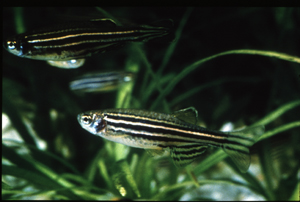About us
Our lab is interested in understanding how naïve progenitor cells segregate to give rise to diverse cell types that eventually form an organ. The question of organ formation is even more profound and challenging when applied to a vertebrate nervous system, where hundreds of cell types exist. We address this question in the context of cranial placodes, placode-derived sensory ganglia and zebrafish lateral line system. Development of placode-derived sensory components of the peripheral nervous system are essential for the formation of cranial sensory systems such as somatosensation and taste. The improper development of the cranial sensory system has been implicated in many human disorders, including chronic obstructive pulmonary disease, migraines, bladder overactivity, erectile dysfunction, heart failure, arrhythmia and others. Thus uncovering genes that specify cranial placodes and ganglia should provide better understanding for the mechanisms underlying these processes.
The mechanosensory lateral line system of aquatic vertebrates is used to detect displacement of water and controls various types of swimming behavior. The lateral line provides an excellent system for studying basic biological processes such as collective cell migration and specification, organ morphogenesis and patterning in the genetically-tractable model system such as zebrafish.
Axonal transport
We have developed zebrafish as a model system for studying axonal transport (see our recent publication). Within individual neurons, various types of cargo must be actively transported to specific compartments. For example in the axon synaptic proteins are targeted to axon terminals, while growth factors are often transported back to the cell body. This is accomplished primarily by microtubule-based transport mediated by two types of molecular motors, kinesins and dyneins, that respectively move cargo away from and towards the cell body. Various types of vesicles and organelles are moved by fast transport both in anterograde and retrograde directions at speeds of 0.5-10 μm/sec.
Model system

The zebrafish has emerged as a powerful model system for understanding vertebrate development. In addition to experimental embryology, zebrafish is one of the few vertebrate model systems that are easily amenable to classical genetic approaches. Advantages of zebrafish include:
- Small size
- Relatively short generation times
- Embryo transparency
- External development allowing easy manipulation
- Advanced genetics, including transgenesis and mutagenesis
- Full-length, annotated genome nearing completion
We use many of these advantages as well as lineage analyses, cell ablation and cell transplantation to study development of the cranial placodes and ganglia , the lateral line system, and axonal transport in zebrafish.